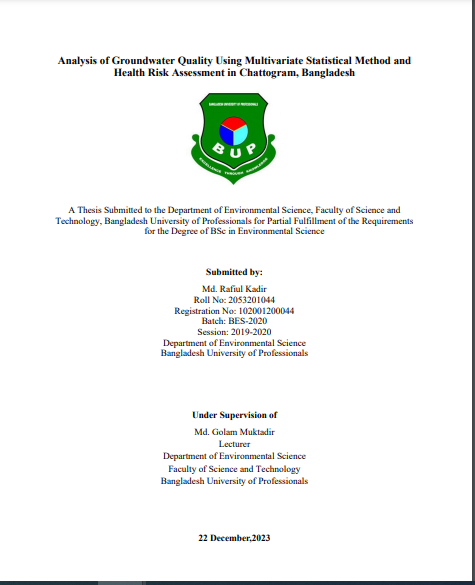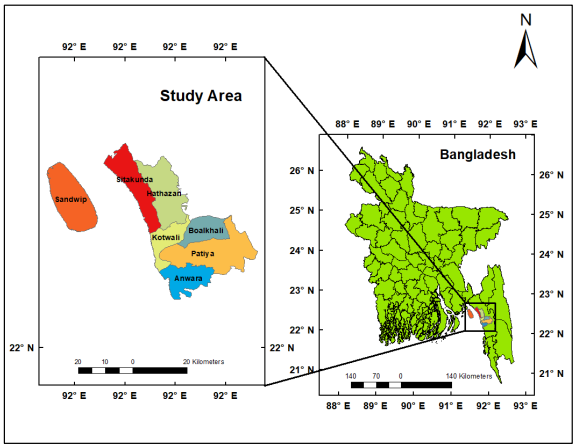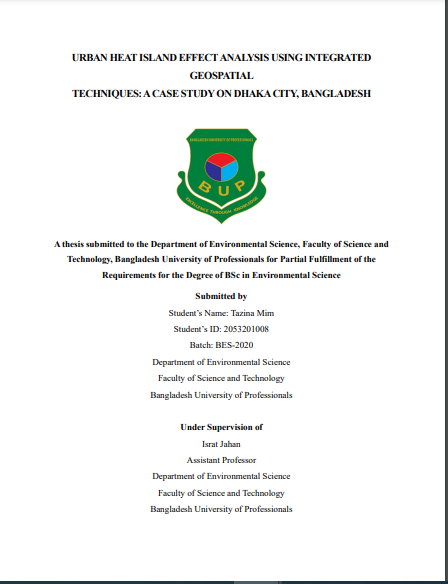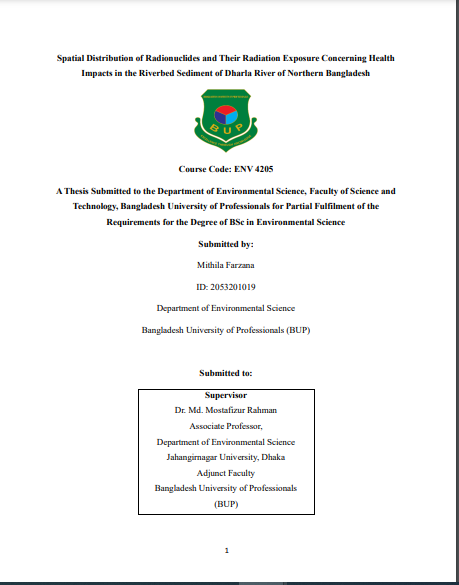
Analysis of Groundwater Quality Using Multivariate Statistical Method in Chattogram. Groundwater is a vital source of potable water in Bangladesh, and millions of people rely on it to satisfy their water requirements daily. But in Bangladesh the water is getting polluted day by day. This main reason is due to a combination of natural processes and activities carried out by humans, such as geology, weathering, irrigation, industrial activity, and waste disposal.
Water pollution is related to numerous of acute and chronic health issues, including skin sores, cancer, neurological difficulties, dental fluorosis, and anemia. While underground water is compared to surface water is typically considerably cleaner and less likely to be polluted. It is not entirely immune to pollution.
However, the continuous discharge is occurring of industrial effluents, home sewage, and waste from the dumping of solid waste causes the groundwater to become polluted and creates health problems. In Bangladesh, Chattogram is the most Industrial district which is just beside the coast and its groundwater may be affected by industrial pollution or other geogenic sources. Still the city of Chattogram totally unplanted area as a result the pollution increasing day by day.
| Report Title : | Analysis of Groundwater Quality in Chattogram. |
| University Name : | Bangladesh University of Professionals |
| Submitted To : | Md. Golam Muktadir |
| Submitted By : | Md. Rafiul Kadir |
| Total Page : | 85 |
Background Of the Study:
Regular monitoring and proper assessment are highly essential in terms of physical and chemical characteristics and the presence of trace metals coupled with water quality assessment, and health risk assessment to save lives and the environment.
To address this concern, this study is based on the Chattogram for assessing the groundwater quality and identify out the health risk. A total of 39 groundwater samples have been collected from different regions of the district during the both wet and dry season.
Multivariate statistical analysis like principal component analysis cluster analysis and health risk assessments are performed in the study. These methods collectively offer a comprehensive understanding of the potential dangers that associated with grounder water quality in the Chattogram.
This information is very important for directing for the management strategies of water resources and safeguarding the health and well-being of the population in the surrounding area.
Outline of the Thesis:
There are some outlines of the thesis are given below—
- In Chapter One: In this chapter of Introduction part where are included Background of the Study, Problem Statement, Rationale of Study, Research Question, And Research Objectives.
- In Chapter Two: Is Literature Review & Research Gap are included Literature Review, Ground Water Contamination and health impact, Effect of trace element, Effect of seasonal variation on groundwater, Research gap.
- In Chapter Three: In this chapter of Methodology are included Research Design, Study area, Geological and Hydrogeological setting, Sample collection, Quality assurance & control, Analysis of Physical parameters of water, Elemental analysis, Software used in this study, Estimation of Groundwater quality, Multivariate statistics, Principal component analysis, Pearson correlation, Hierarchical cluster analysis, Human health risk assessment of groundwater, Average daily dose, Hazard quotient and hazard index, Carcinogenic risk.
- In Chapter Four: Result & Discussion- Descriptive statistics, Ionic composition, Trace metal composition, Quality indexing for drinking purpose, Correlation analysis, Hierarchical cluster analysis for wet season, Hierarchical cluster analysis for dry season, Principal component analysis, health risk assessment, non-carcinogenic risk, Carcinogenic risk.
- In Chapter Five: In chapter five are included Conclusion & Recommendations.

Problem Statement:
Groundwater pollution is a very serious health problem in Bangladesh, specially in rural areas where it`s the main or prime source of drinking water. Bangladesh is one of the high-density populated countries in the world but it has limited freshwater resources, leading to overuse & pollution of groundwater.
In Bangladesh around 97% of the population depends on underground water for drinking water. Contaminants in groundwater, such as trace elements, can cause various health problems, including skin cancer, neurological issues, heart disease, diabetes, anemia, and cognitive problems.
Arsenic is the most dangerous contaminant, affecting about 35 million people in Bangladesh. In Bangladesh, Chattogram and Dhaka are mostly facing similar issues, including arsenic and iron contamination in underground water.
Therefore, these studies have not fully explored the health risk of high level of arsenic, iron and so many problems.
Objectives of the Research:
- Evaluation of Physicochemical Properties: To evaluate the current physicochemical properties of groundwater in Chattogram comparing them with national and international standers.
- Groundwater Quality Index Analysis: Utilize the groundwater quality index to assess groundwater quality during both wet & dry seasons. This analysis will be help to categorize the water into quality range, such as excellent, good or poor, offering insights into seasonal attention.
Investigation of Health Risks: Investigate health risks linked to groundwater contamination by the evaluating the concentration of harmful trace elements such as arsenic, iron and chromium.
Conclusion:
Groundwater is a play vital role resource in Bangladesh relied upon by millions for drinking and daily needs, especially rural areas. Moreover, this is most essential source of faces significant threats from contamination due to overuse, industrials impact and natural issues.
For the groundwater issues people will be face harmful trace elements like arsenic, iron & chromium. As a result, they server health risk, including cancer, neurological disorders and other chronic illnesses.
In the Chattogram district, groundwater contamination is a critical concern, with studies identifying elevated levels of toxic elements such as arsenic and iron. Seasonal and geographical variations in water quality further complicate the situation, highlighting the need for regular monitoring and comprehensive assessments.
In conclusion, addressing groundwater contamination requires a collaborative effort involving government authorities, researchers, and local communities. By taking proactive steps, Bangladesh can mitigate the risks associated with groundwater pollution and ensure the long-term availability of safe drinking water for its population.







